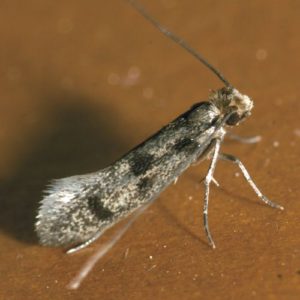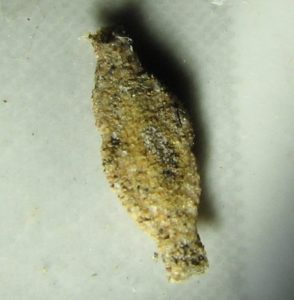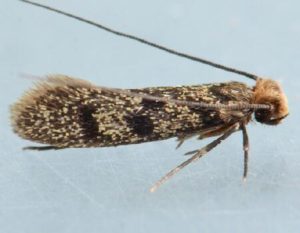Plaster Bagworm (Phereoeca uterella)
The plaster bagworm is a member of the family of fungus moths. Amateur entomologist Thomas de Grey, 6th Baron Walsingham first described this species in 1897.
i.pinimg.com
Scientific Classification
- Family: Tineidae
- Genus: Phereoeca
- Scientific Name: Phereoeca uterella
Description and Identification
Caterpillar
Fully developed caterpillars are white with a dark brown head. They have three pairs of brown legs and a set of white pro-legs.
The larvae are rarely seen as they spend most of their lives inside their cases. Cases are around 1.4 cm long and look like pumpkin seeds.
Adult Moth
Sexual Dimorphism: Present. Males are noticeably smaller than females.
Color and Appearance
Forewing: When the wings are opened, they are gray with dark spots. When they are closed, the colors remain the same.
Hindwing: When the wings are opened, they are plain and lined with long gray hairs. When they are closed, the hairs remain visible.
Average wingspan: 1.3 cm (females); 0.9 cm (males)
Flight pattern: Erratic
Season: Year-round
Egg
They are soft, pale blue, and about 0.4 mm long.
Quick Facts
| Other Names | Household casebearer, atʃitʃiɁũɨi (in Kwaza) |
| Distribution | Americas, including Florida and Louisiana in the US, and Brazil and Guyana in South America |
| Habitat | Tropical environments |
| Lifespan of Adults | 8-20 days |
| Host Plants | Silk, especially that woven by spiders; also, dandruff, fallen human hair, and wool |
| Adult Diet | Does not feed |
Scientific Classification
- Family: Tineidae
- Genus: Phereoeca
- Scientific Name: Phereoeca uterella





